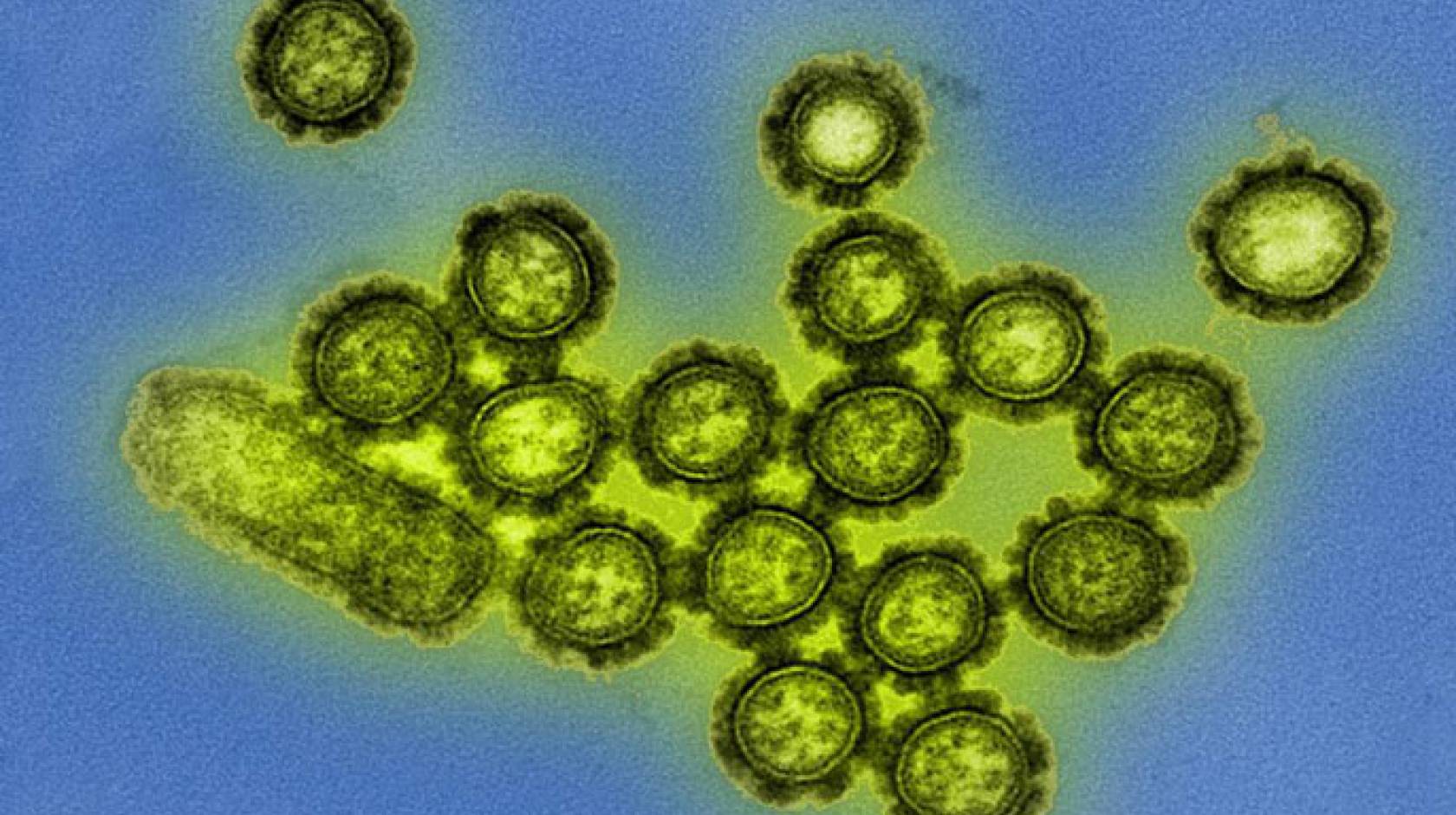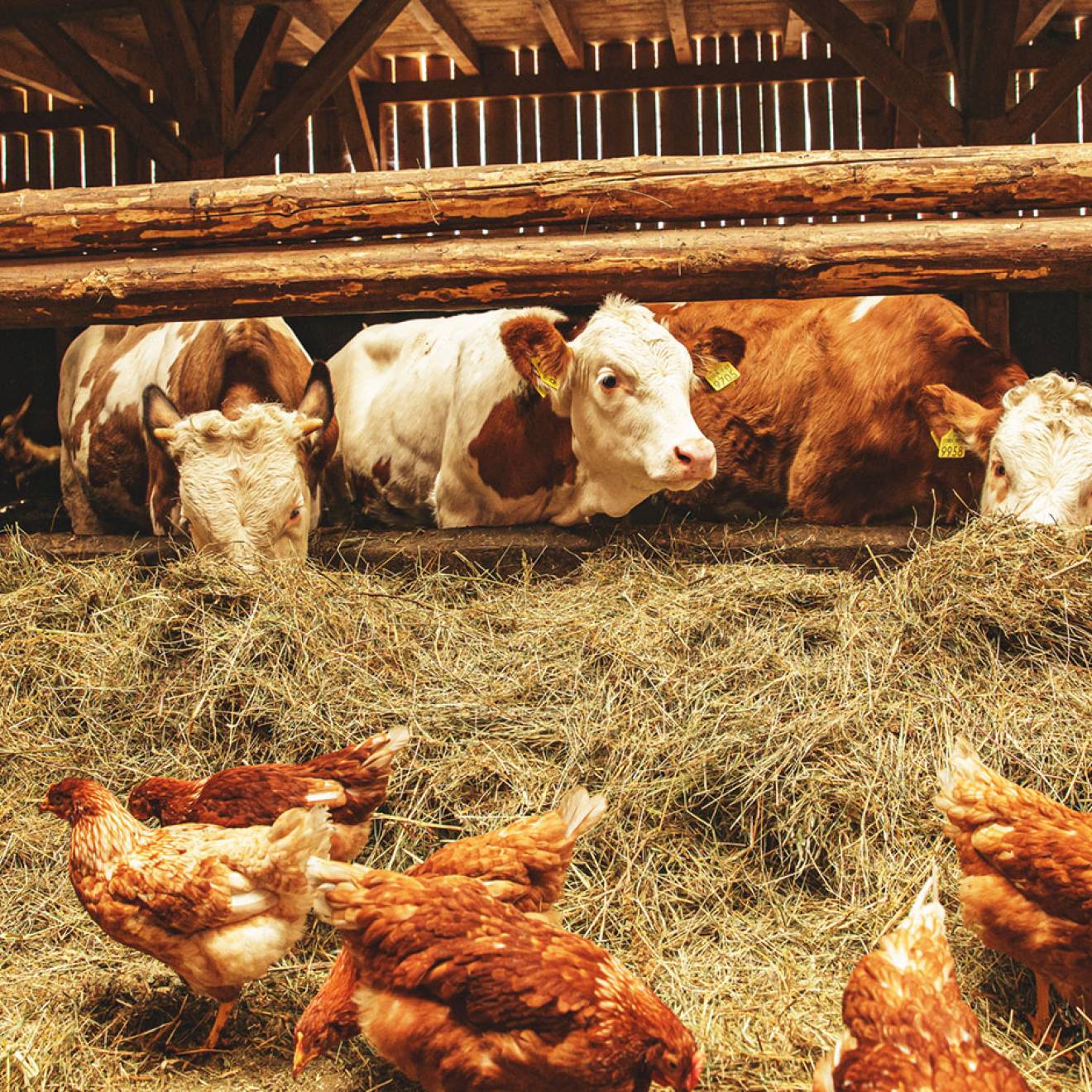Greg Watry, UC Davis

Scientists know viruses are contagious and can spread quickly, but how do they interact with each other?
To gain an understanding into how viruses spread, and ultimately evolve, Samuel Díaz-Muñoz, assistant professor of microbiology and molecular genetics in the College of Biological Sciences at the University of California, Davis, explores the hustle and bustle of viruses’ social lives in a new paper published in Cell Host & Microbe.
Viruses rely on hosts to survive and reproduce, infecting all forms of life from plants and animals to bacteria and other single-celled microorganisms. Found in nearly all ecosystems, millions of different types of viruses are believed to exist.
Competition is fierce within their tiny worlds. Since multiple viruses often co-infect the same host, they have developed strategies to interact with one another, from exploitation to cooperation. Some viruses even “cheat” by piggybacking on the reproduction of other viruses.
Díaz-Muñoz is calling for scientists to take a fresh look at viruses for the opportunity to develop new perspectives to approach the treatment of viral diseases.
“We’ve seen more and more how things we didn’t think were social are social and there are a lot of fundamental biological processes that are social,” he said.
A viral view of sociality
While a great deal is known about virus-host exchanges, the conceptual framework for how viruses interact with one another is much less clear. Focusing on virus-to-virus interactions may help shed light on many unexplained behaviors, such as how viruses evolve.
“I’m interested in how interactions between individuals affect reproduction,” said Díaz-Muñoz. “And reproduction, of course, is key for evolution.”
Díaz-Muñoz’s research brings virus-virus interactions into the spotlight through social evolution theory, which emphasizes the effects of social behavior on an organism’s success in its environment.
In certain cases, viruses can evolve to slow down their infection rates at the cellular level, enabling hosts to live longer and transmit the virus to their community. In effect, the virus postpones its own direct proliferation in a host for the larger, collective goal of spreading its future generations to many hosts.
Viruses don’t possess the brainpower and corresponding signs of behavioral cognition seen in more complex organisms, but behavioral traits with some genetic basis can still evolve by natural selection.
“Even though we’re using words like ‘conflict’ and ‘cooperation’ that colloquially mean certain things, these are actually based on mathematical theory and do not require complex cognitive processes,” he said. “You don’t need complex cognition to have social evolution.”
Using social evolutionary concepts to combat virulence
Díaz-Muñoz formerly studied the social behavior of small monkeys called tamarins, observing how interactions between related individuals affected their reproduction.
At the same time, other researchers had started applying social evolution theory to microbes, like bacteria and other single-celled microorganisms. Díaz-Muñoz took note. The more he investigated, the more intrigued he became.
Today, Díaz-Muñoz hopes that a social view of viruses can help scientists design better therapies.
Influenza vaccines, for example, contain a weakened, or attenuated, variant of a virus. They still elicit an immune response, but they are not strong enough to make the hosts sick.
Successful so-called “cheating” viruses behave similarly to these attenuated viruses. They increase their own chance of evolutionary success by taking advantage of the reproduction of other viruses to aid in their own reproduction. In some mixed infections, the cheating viruses outcompete other viruses, but decrease the overall fitness of the entire viral population.
Knowing how cheating viruses influence a viral population’s fitness could lead to new strategies that employ cheating viruses to limit viral outbreaks.
“It turns out that a lot of these cheating viruses are pretty potent stimulators of the immune response, more so than the actual intact virus,” said Díaz-Muñoz. “We know the conditions under which these cheaters are generated so we can use that knowledge to generate other attenuated viruses that might work better as vaccines.”

